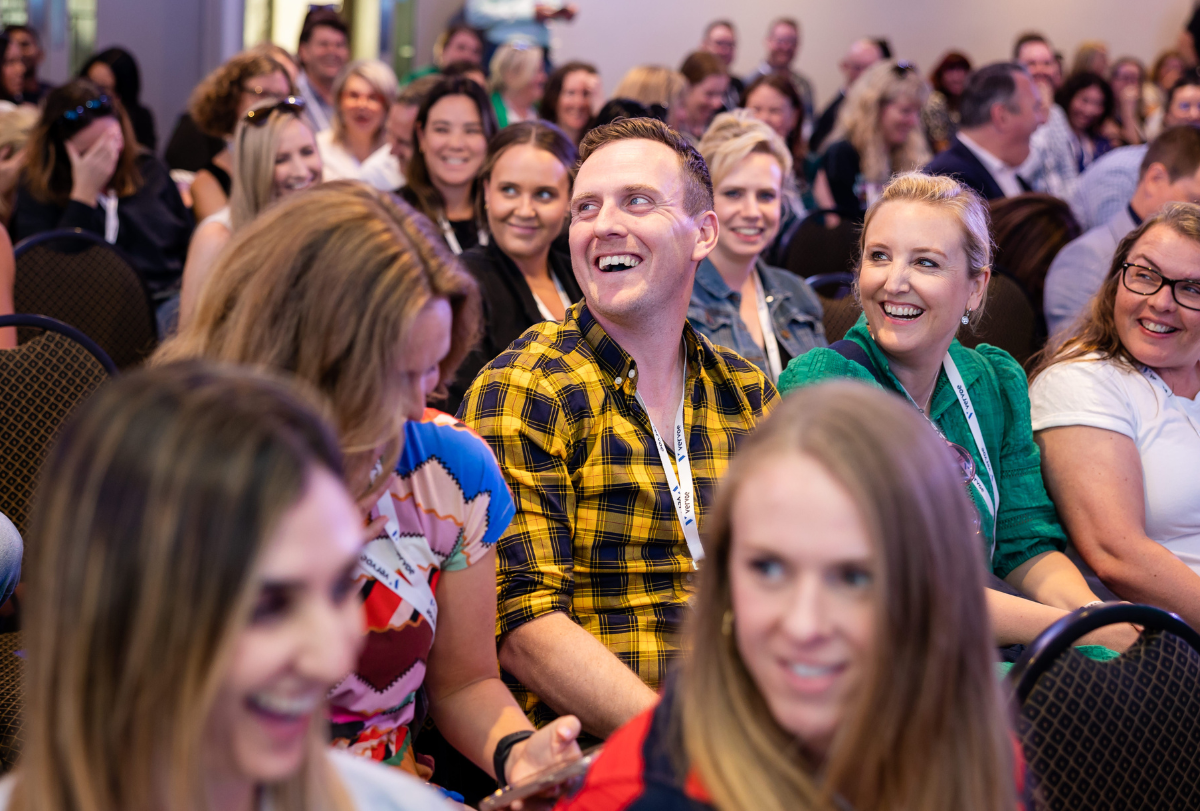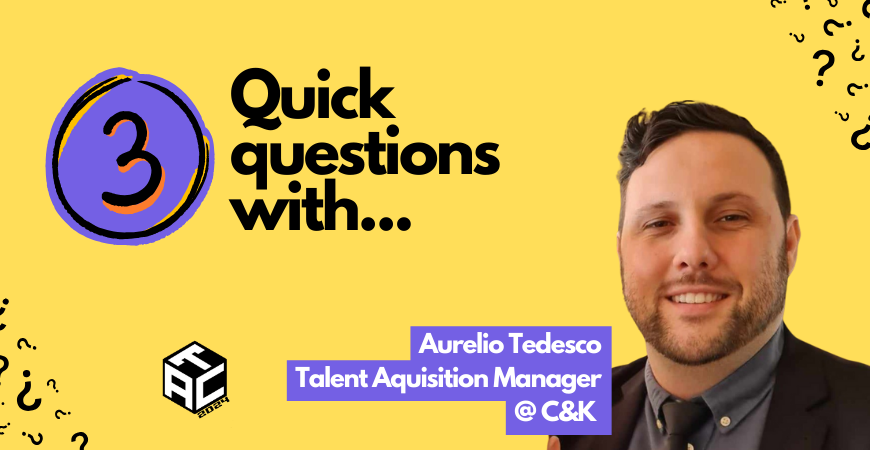This is the third in a five-part blog series on how to transform recruitment marketing to ensure it creates impact and value for your organisation.
Forward looking recruitment marketers are proactively thinking about what their target audience will value, because they know if they provide them with what they value their audience is more likely to provide in return the information needed to segment them, assess them, and match them to opportunities.
Recruitment marketers are on the front line of modern data centred Talent Acquisition organisations. Candidate data is the life blood of effective Talent Acquisition. It is this data which feeds our systems, algorithms and decision-making processes. We are a data hungry organism that must be feed constantly with updated and relevant information to make our engine operate.
For more on how I see recruitment marketing meeting this challenge see my first article in this five-part series, Transforming Recruitment Marketing. Last week I discussed how to define your candidate data needs by creating a candidate data map. In this third article I am going to define the elements a recruitment marketer should consider when seeking to truly “know” their target audience.
Focus on providing what your target audience finds valuable not what your internal “expert” team of advisors thinks your audience will find valuable. It is your job to know the difference.
Recruitment marketing has often been defined by its glossy employer brand campaigns and career site web pages outlining the company benefits, free snacks and ping pong tables. The focus has been on what a company wants a prospective employee to know about them. Companies focus on articulating the employer brand value often at the detriment of serving prospective candidate up with what they want to know. There are a couple of reasons this happens.
First, employer brand content is often served up in ways that replicates consumer branding without taking into account the difference in the audience acquisition and sell process. Second, when you have not taken the time to know what someone really wants to know or what they value, it is natural to lean towards focusing on providing them with what you are proud of or what “you think” they want to know. The nemesis of any recruitment marketing campaign design session is a room full of well-meaning talking heads who all have an opinion on what they would see as valuable if they were your target audience.
Wake up! Neither you or those talking heads are not your target audience, and unless they have talked to your audience and asked them what they want, your and the talking head’s opinions are worth zero. As recruitment marketers of the future, we must push our chairs back from the conference room table and get ourselves immersed in the world of our audience. We must watch what they do, ask questions about why they do it and seek to uncover what they perceive as valuable.
Make understanding your target audience’s behaviours, needs and preferences an ongoing part of your recruitment marketing practice. People are dynamic and what you thought you knew about your audience yesterday may not be relevant today.
The challenge is that candidate immersion cannot be a one-time deal. It must happen consistently in order to be valuable. If you are relying on candidate insights from any time before 2020 for example, I can promise you they are outdated and most likely irrelevant because the world has changed dramatically, and candidate preferences and values have as well.
I have spent the past 25 years of my career exploring the various dimensions of what makes people tick. Understanding people is the cornerstone of designing an experience that both resonates with them and provides you and your business the value you are seeking from your relationship with them.
Those 25 years have taught me one undeniable truth. People are dynamic and the enemy of any experience, process, systems or organisational design is relying on what you did before to get you the results you are seeking now.
While the cornerstone of many process designer’s dreams is to create that one perfect experience, process or engagement and then replicate it repeatedly, that is not a reliable plan. Why? Because people change. They experience new things. They interact with their world in new ways. The world around them changes and forces them to take on new behaviours and preferences. All these things make people dynamic and this means your experience and engagement design must be dynamic as well, if you want it to be successful over time.
Segment your audience based on who they are, not based on how you organise them to match them to jobs. Audience segments and job profiles are not the same thing.
Creating value for a recruitment marketing audience is also challenging because we frequently misunderstand how to segment our target audiences and assume our audience segments are identical to pipelines or other groupings of Talent that are based on how we as Talent Acquisition organise people to best align them to opportunities.
There is a very important distinction between how we organise Talent into groups we can source, match or sell specific opportunities to vs. how we segment audiences to understand their motivators, drivers, preferences and behaviours.
Consider this. If I am chartered with building a recruitment marketing campaign to attract software engineers, what is my target audience? Should I build a marketing plan based on what I think “software engineers” may see as valuable? I could, however what is the likelihood that a software engineer in her late 40s and at the midpoint of her a career would want to know the same things or find the same information valuable as a software engineer who is preparing to finish their degree in the next year and exploring opportunities for their first job.
Of course there will be some overlap based on the type of work they do, but what makes them tick, how they make decisions and what they see as valuable to know about you as a potential employer are likely to be very different due to their different life experiences.
I propose instead that you start your exploration of audience value triggers and behaviours by first exploring audience segments based on where those candidates are likely to be in their career journey. Once you understand that, laying in insight based on job profiles becomes like the sprinkles on the sundae versus the ice cream.
To understand an audience segment, think about them as having three layers and seek to understand the candidates behaviours, needs, motivators and value drivers at each layer, in order to create an audience insight menu you can rely on to build targeted and unique experiences that provide candidates with value. The purpose of understanding your audience segments to this degree is that by providing candidates with this value will increase the likelihood that they respond to your call to action to engage further, provide more information about themselves and become more dependent upon you as a source of insight.

Audience journey maps should be from their point of view and should reflect what they are experiencing both inside and outside of your direct control.
Knowing what makes your target audience tick is important but organising that insight into something that is actionable for you as a recruitment marketer is an additional step, I encourage you to take.
Over the past four or five years the term journey mapping has become all the rage in the recruitment marketing world. Journey maps are hugely beneficial to you as a recruitment marketer, however, often journey maps are created with too discrete of a purpose that they do not adequately support recruitment marketing in relationship-based engagement design.
Many journey maps I see are created to map the steps taken to look for and then get hired for a job. These maps have two specific flaws that should be avoided.
First, teams frequently create these maps based on the process steps of the organisation or Talent Acquisition process versus based on the steps a candidate themselves would define they are going through. No candidate anywhere ever reflected and said to themselves, “I am wanting to know X because I am in the ‘short list’ stage of company Y’s process”. They, however, may have reflected that they want to know something because they are in the stage in their job exploration where they are narrowing down their options to a few key companies. Rule one of an effective journey map is that it needs to be from your audience’s perspective not yours.
The second flaw in many journey maps is that they are so focused on the steps of the hiring transaction and what a candidate may be thinking and feeling, and doing related to that transaction that they miss the fact that candidates do not think, feel or behave in a job hunting vacuum. They are having numerous other experiences, actions and things happening around them as well. These things frequently impact how they will think, feel and act in relation to the process of finding and landing a job at your company.
This wider whole person view will definitely impact what they see as value you can provide them through your recruitment marketing. For example, your journey map around hiring from late 2020 onward should reflect that candidates who are career professionals are not only looking for a job but also reeling from COVID implications like having to manage home and work and their kids school from home and that they are on tons of zoom calls a day now so may react and behave differently to the video interview step in your process then they would have before.
What candidates find valuable in each step of their journey is informed as much by what is happening outside their engagement with you as by what is happening inside it.
Mental models are the secret code to understanding what to do to get your audience to behave in the ways you would like them to.
Up until this point we have focused primarily on what your target audience values which is very helpful in determining things like content and or solution offerings etc. However, to really influence a candidate’s behaviours, including what they share with you and when, you need to understand why your target audience values certain things or behaves in certain ways. You need to understand your target audience’s mental models.
Mental models are the code behind behaviours. They are created through the unique combination of experiences a person has had over time and become the representation of how an individual sees the intentions, assumes the actions and determines their reactions to the surrounding world. This is where you put all your layers of insight together to hack your audience. If you understand an audience’s primary mental models you can successfully design interactions and experiences that will result in them behaving, the way you desire.
In recruitment marketing this means for example, uploading a fresh copy of their resume even though they already supplied one six months ago or proactively telling you their skills or taking a screening assessment. To get someone to do any of these things you need to understand the basic mental model they are operating under.
Here is an example of how you can start to explore mental models. Look at the insights you have collected about your target audience. Define the call to action you want for them (what do you want them to do). Now, think about what is going on for them most likely at the point in time you are engaging with them (refer to your journey map). What are they feeling? What feeling do you want them to have? What they feel will determine what they are thinking.
So, focus in on creating feelings that will create thoughts that are likely to drive the individual to take the action you want them to take. For example, what would you need to make a young professional feel, in order to make them think it is important that this company know they have X skill? If you can figure out what that is by leveraging your audience insights you are well on your way to hacking the audience’s mental model and driving them to taking the action you need, when you need it.
Stay tuned for part 4: Building a Candidate Data Infrastructure to Collect, Organise, Collect and Analyse Candidate Data
Cover image: Shutterstock
This article first appeared on LinkedIn on 19 January 2021.




























